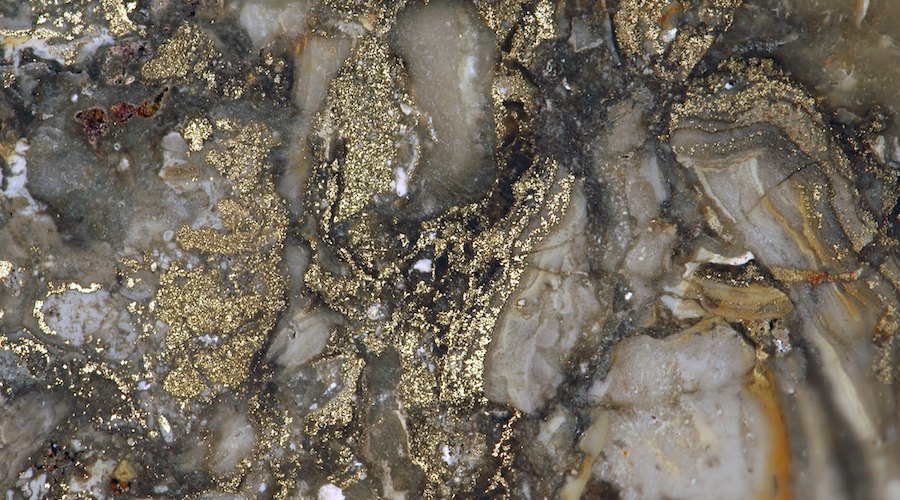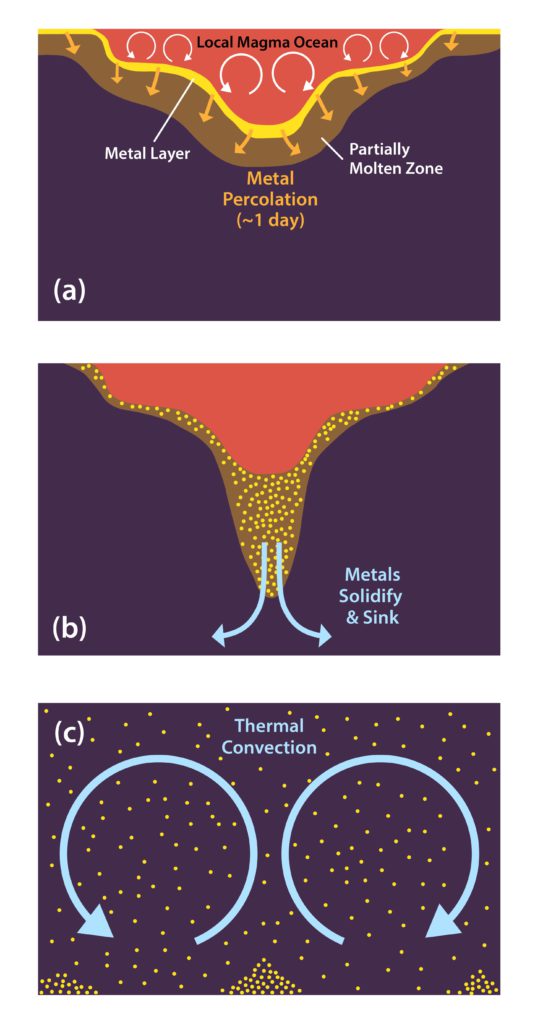New theory aims to explain how gold, platinum deposits formed on earth’s mantle

By re-examining conventional wisdom, researchers at Yale University and the Southwest Research Institute have come up with a new theory on how gold and platinum deposits ended up on earth’s mantle.
The theory centers around a thin, “transient” region of the mantle, where the shallow part of the mantle melts and the deeper part remains solid. The researchers found that this region has peculiar dynamic properties that can efficiently trap falling metallic components and slowly deliver them to the rest of the mantle.
Their theory posits that this delivery is still ongoing, with the remnants of the transient region appearing as “large low-shear-velocity provinces”—well-known geophysical anomalies in the deep mantle.
“This transient region almost always forms when a big impactor hits the early earth, making our theory quite robust,” researcher Simone Marchi said in a media statement.
Marchi and study co-lead Jun Korenaga believe the new theory not only explains previously enigmatic aspects of earth’s geochemical and geophysical evolution but also highlights the wide range of time scales involved in the planet’s formation.

“One of the remarkable things we found was that the dynamics of the transient mantle region take place in a very short amount of time—about a day—yet its influence on subsequent earth evolution has lasted a few billion years,” Korenaga said.
Their findings have been published in an article in Proceedings of the National Academy of Sciences.
In the paper, they explain that previous research had established that precious metals came to our planet billions of years ago after the early proto-earth collided with large, moon-sized bodies in space, which left behind deposits of materials that were folded into what is today’s earth.
But that absorption process has remained something of a mystery.
Aside from being valued for their scarcity, aesthetic beauty, and use in high-tech products, gold and platinum are highly “siderophile” elements.
They are drawn to the element iron to such a degree that they would be expected to collect almost entirely in earth’s metallic core—either by merging directly with the metal core on impact or by sinking quickly from the mantle into the core.
By this logic, they should not have collected at or near the surface. Yet they did.
“Working with Simone, who is an expert on impact dynamics, I was able to come up with this novel solution to this conundrum,” Korenaga said.
{{ commodity.name }}
{{ post.title }}
{{ post.date }}

2 Comments
curtis pegg
I am from Porland Or. I now live in southern Or. Ten years ago, I dug down in my back yard. I had a reason, but it’s not related to what I discovered. I came across an old riverbed which contained a sand bar and lots of sand. In that sand was 1% platinum. the location is about 50 miles on the northwest side of Mt. Hood. At the time I was in foreclosure and couldn’t follow up on my find. But I know after studying the Missoula floods history, THERE IS LOTS MORE EAST OF PORTLAND OR. In and around the Columbia River Goerge. good luck.
Christina Dian Parmionova
Rare earth elements are critical to modern life and society.